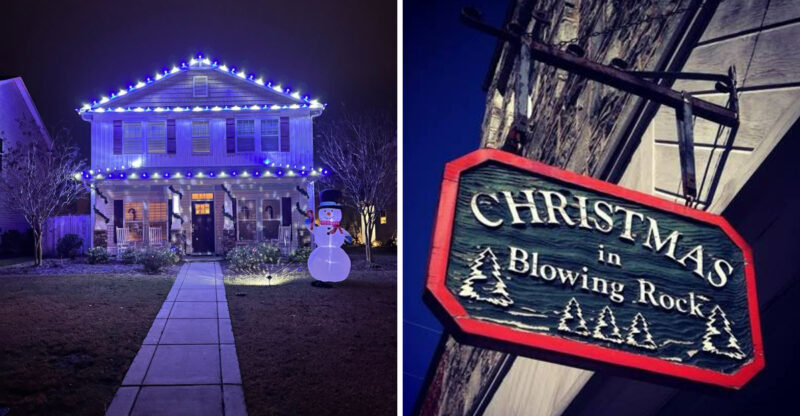Nevada Hotspots Where The Locals Have Been Replaced By Tourists

Nevada has always been a land of hidden gems, from natural hot springs to historic mountain towns. But as word spreads and social media showcases these beautiful places, more tourists are flocking to spots that locals once enjoyed in peaceful solitude.
I’ve gathered a list of Nevada locations that have transformed dramatically due to visitor influx, where the quiet charm has given way to crowded parking lots and busy weekends.
1. Fish Lake Valley Hot Springs
If you’re looking for a quiet soak under the stars, Fish Lake Valley Hot Springs might not be your best bet anymore. What was once a serene desert oasis has become a magnet for Instagram photographers and weekend warriors seeking that perfect hot spring experience. The transformation happened gradually as online travel blogs and social media posts spread the word.
Now, finding a spot to enjoy the warm mineral waters without bumping into strangers is nearly impossible on weekends. Overcrowding has led to serious environmental concerns, including erosion around the pools and litter scattered across the landscape.
Local residents who used to visit for peaceful meditation sessions now avoid the area entirely during peak times, mourning the loss of their hidden sanctuary.
2. Spencer Hot Springs
Did you know that Spencer Hot Springs features old bathtubs repurposed as soaking pools? This quirky detail once made it a beloved secret among Nevada locals who appreciated its rustic charm and spectacular mountain views. But the secret got out, and now the parking area overflows with rental cars and tour buses nearly every day.
What really bothers longtime visitors is the disrespect shown to this natural treasure. Litter piles up around the tubs, and thoughtless visitors have damaged the delicate desert ecosystem surrounding the springs. Some tourists even carve their names into nearby rocks, destroying the untouched beauty that made this place special.
Locals now refer to Spencer as a cautionary tale of what happens when tourism outpaces conservation efforts.
3. Ruby Valley Hot Springs
It’s hard to believe Ruby Valley Hot Springs was once the perfect spot for quiet morning meditation. Local ranchers and residents would arrive at dawn to enjoy the therapeutic waters while watching the sunrise paint the Ruby Mountains in golden hues. Those peaceful mornings feel like ancient history now.
Weekend crowds have completely changed the atmosphere, turning what was a spiritual retreat into a busy recreational area. Environmental degradation has become visible, with vegetation trampled and water quality declining from overuse. The surrounding area shows signs of wear from increased foot traffic and careless camping.
Many longtime visitors have simply given up and found new hidden spots, hoping history won’t repeat itself.
4. Carson Hot Springs
How does a century-old rustic bathhouse become a commercial resort? Carson Hot Springs tells that story perfectly, having evolved from a simple wooden structure where locals soaked away their aches to a full-fledged tourist destination complete with spa services and gift shops. The transformation reflects changing priorities as business interests recognized the profit potential.
Old-timers remember when you could show up anytime and have the place mostly to yourself. Now you need reservations, and the prices reflect the tourist-focused business model.
The original charm has been polished away in favor of modern amenities that appeal to visitors expecting resort-level comfort. While the facility is undeniably nicer, something authentic was lost in the renovation process.
5. Mount Rose Ski Resort
Are you prepared to sit in traffic just to go skiing? Mount Rose Ski Resort locals certainly weren’t expecting it when this mountain became a tourist hotspot. What was once a quiet local ski hill where Reno families could escape the crowds has become overwhelmed by its own success and proximity to Lake Tahoe’s tourist corridor.
The slopes are now packed on powder days, with lift lines stretching longer than anyone remembers. Parking lots fill up before most locals finish their morning coffee, forcing latecomers to shuttle from overflow areas.
Season pass holders who once enjoyed uncrowded runs now compete with day-trippers for space. The mountain hasn’t expanded capacity to match demand, leaving everyone frustrated.
6. Heavenly Ski Resort
Though Heavenly has always been large, the Nevada side used to offer a quieter alternative to the California chaos. Locals knew they could escape to the Nevada runs and find relatively peaceful skiing even on busy holidays. That advantage has completely disappeared as the resort marketed itself more aggressively to tourists seeking the complete Lake Tahoe experience.
The transformation mirrors South Lake Tahoe’s overall evolution into a year-round resort destination. Where locals once found refuge, they now encounter the same crowds, noise, and commercialization they were trying to avoid.
Real estate prices have skyrocketed, pushing longtime residents out of the area entirely. The Nevada side has lost its distinct identity, becoming just another extension of the tourist machine.
7. Incline Village
Where did all the locals go? If you visit Incline Village today, you’ll mostly encounter vacationers, second-home owners, and tourists enjoying Lake Tahoe’s Nevada shore. This mountain community once had a genuine neighborhood feel, with year-round residents who knew each other and participated in local traditions. That sense of community has evaporated as tourism and vacation rentals took over.
Housing costs have become astronomical, forcing working families to move to more affordable areas. The beaches that locals once enjoyed for free now require expensive passes. Restaurants cater to tourist tastes and budgets rather than serving as gathering places for residents.
The village has become a resort destination rather than a true community, losing its soul in the process.
8. Virginia City
With a colorful past rooted in silver mining and Wild West history, Virginia City has struggled to maintain authenticity while accommodating tourist expectations. Locals take pride in their town’s genuine heritage, but the pressure to create an entertaining Old West experience has led to compromises. Gift shops selling made-in-China souvenirs now occupy buildings where miners once conducted real business.
The permanent population has dwindled as property values rose and tourist-oriented businesses replaced local services. Residents debate whether preservation means keeping history alive or creating a theme park version of the past.
Some longtime families have left entirely, unable to reconcile the town they knew with what it’s becoming. The challenge remains finding balance between economic survival and cultural integrity.
9. Lake Tahoe’s Secret Cove
It’s ironic that a place called Secret Cove is now one of Lake Tahoe’s worst-kept secrets. This clothing-optional beach on the Nevada side was once truly hidden, known only to locals who appreciated its natural beauty and accepting atmosphere. Social media changed everything, with influencers posting photos that brought thousands of curious visitors to this once-secluded spot.
The cove now gets so crowded on summer weekends that people struggle to find space on the rocks. Parking along the highway creates safety hazards, and the trail down has eroded from constant foot traffic.
What made Secret Cove special was its sense of discovery and privacy, both of which have completely vanished under tourist pressure.
10. Trego Hot Springs
When Burning Man season arrives, Trego Hot Springs transforms from a remote desert sanctuary into a chaotic pit stop for festival-goers. Located near the Black Rock Desert, this hot spring once offered true wilderness solitude for adventurous locals willing to navigate rough dirt roads to reach it. But popularity has brought consequences that extend far beyond crowded pools.
The environmental impact is startling. Vehicle tracks crisscross the fragile desert soil, and trash accumulates despite volunteers’ cleanup efforts. During peak times, you might wait an hour just to access the springs.
Local conservationists worry about long-term damage to the aquifer and surrounding habitat, fearing this special place may never recover its original pristine condition.
11. Valley of Fire State Park
Are those ancient petroglyphs worth fighting crowds to see? Valley of Fire has become so popular that visitors now compete for parking spots and photo opportunities at iconic locations. Locals remember when you could explore these stunning red rock formations in relative solitude, discovering hidden arches and rock art without encountering another soul for hours.
Tourism has brought needed funding for park maintenance but also created problems like trail erosion and graffiti near sensitive archaeological sites. Popular spots like Fire Wave now require arriving at dawn to avoid crowds.
Longtime Nevada residents feel they’ve lost access to one of their favorite desert escapes, watching it transform into a must-see tourist attraction rather than a place for quiet reflection and exploration.






